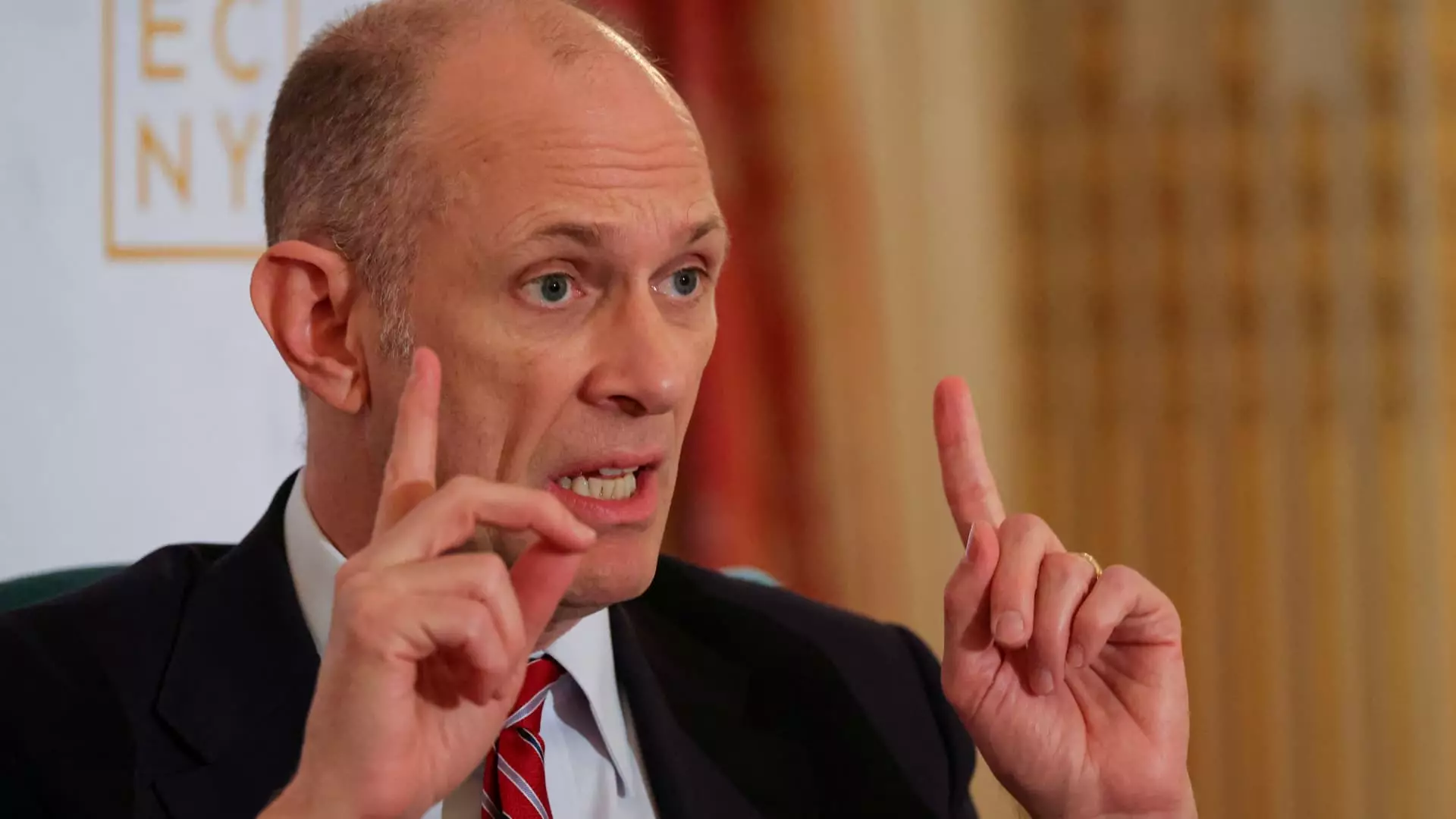In a world where economic stability is often a delicate balancing act, the political climate can serve as a disrupting force. Recently, Chicago Federal Reserve President Austan Goolsbee made a notable observation regarding President Donald Trump’s latest tariff threats. In a CNBC interview, he articulated that these tariffs complicate monetary policy to such an extent that they may hinder anticipated adjustments to interest rates. Goolsbee’s insights serve as a microcosm of the broader challenges we face in a shadowy economic landscape filled with uncertainties spurred by impulsive political rhetoric.
When a central banking figure mentions that tariffs might have “stagflationary impact,” it should send a strong signal across the financial world. Stagflation—a period characterized by stagnant economic growth coupled with high inflation—creates an environment where policymakers find themselves stuck between a rock and a hard place. In this scenario, the Federal Reserve must navigate a narrow path, weighing the potential repercussions before taking any action, all while the President’s impulsive tariff threats loom large.
The Immediate Impact of Tariffs
Tariffs are not merely economic tools; they are political weapons wielded with dramatic flair and alarming haste. Trump’s call for a staggering 50% tariff on European Union goods and a 25% tariff on Apple iPhones made outside the U.S. sends ripples through the market. An overpriced iPhone is hardly a concern for the average citizen struggling with inflation, yet this bold gesture epitomizes the volatility of trade policy. Ultimately, the repercussions extend beyond gadgets—investors are already on edge, having witnessed unpredictable fiscal maneuvers that threaten the balance of free markets.
Goolsbee’s insights clarify how the Fed is currently caught in a precarious position—simultaneously hoping for economic growth while grappling with an administration that seems ready to upend regulations at the slightest pang of dissatisfaction. The absurdity of this scenario is further highlighted when one considers the paradox of economic leadership in a time when politics unduly influences sound fiscal policy. The uncertainty attached to Trump’s tariff threats further complicates the Fed’s task, necessitating a cautious wait-and-see approach rather than bold action.
Interest Rates Under Pressure
Goolsbee’s reluctance to tie the hands of the Federal Reserve during its rate-setting meetings emphasizes the precariousness of the current situation. Financial institutions thrive on predictability, but Trump’s erratic approach to trade means that policymakers must weigh their responses against potential shifts in market sentiment. Goolsbee quotes a timeline of 10 to 16 months, projecting a possible pathway to reduced interest rates. Still, these predictions depend heavily on external political factors that, frankly, are anything but stable.
A Fed member has to balance the dual goals of maintaining maximum employment and controlling inflation—the latter being a significant concern for everyday Americans. The Fed’s current benchmark rate hovers between 4.25% and 4.50%, a figure that reflects the complexities faced in addressing soaring inflation alongside stagnant employment rates. But with conditions rapidly evolving, can we truly rely on forecasts that extend more than a few months into the future?
Hope vs. Reality
Despite the cloud of uncertainty, Goolsbee maintained an undercurrent of optimism about returning to a state of economic growth—yet, is this hope misplaced? Who can feel genuinely optimistic while observing a market influenced by the whims of a single individual? The rush to calm the waters when they are, in fact, stormy highlights the inherent conflict entwined within fiscal and trade policy.
The apparent fixation on tariffs creates an environment where the creative potential of the American economy is stifled. Instead of fostering innovation or investment, we are left with a market wary of unpredictability and danger. Businesses and employees alike are burdened with anxiety over future policies, uncertain of their footing as they navigate an uneven terrain. An optimistic projection seems like wishful thinking in a time of turmoil.
As we reflect on the relationship between policy and politics, it becomes increasingly critical to advocate for a course of action that prioritizes stability over short-lived, knee-jerk reactions. The American economic narrative deserves better than the whims of a trade war, and it is the responsibility of economic leaders to rise above fear and make bold yet prudent choices for the greater good. In a world replete with noise, clarity must rise above political drama—only then can we truly advance toward a sustainable economic future.


Leave a Reply